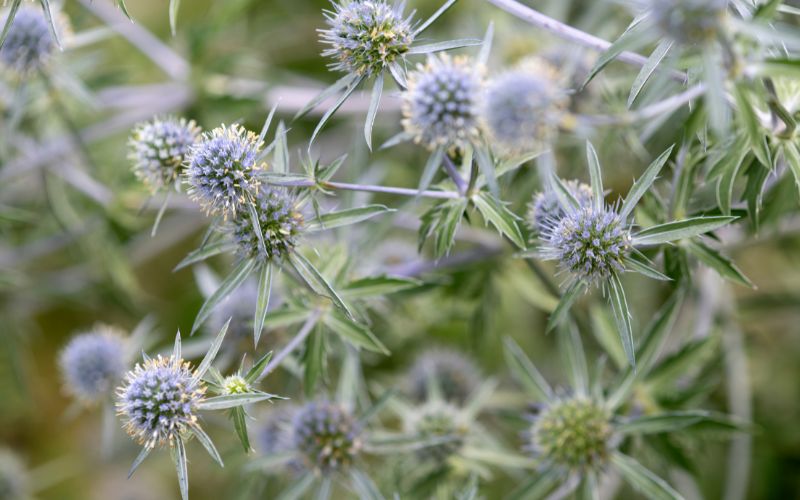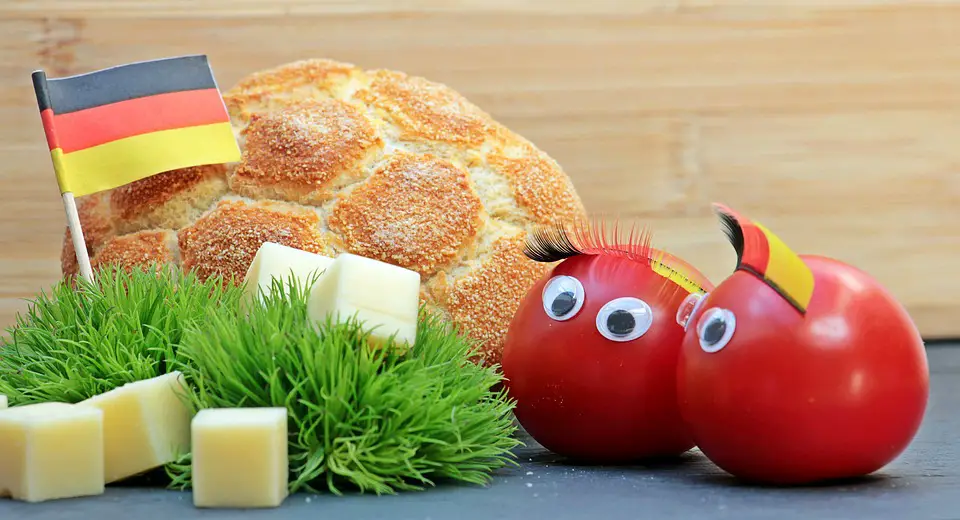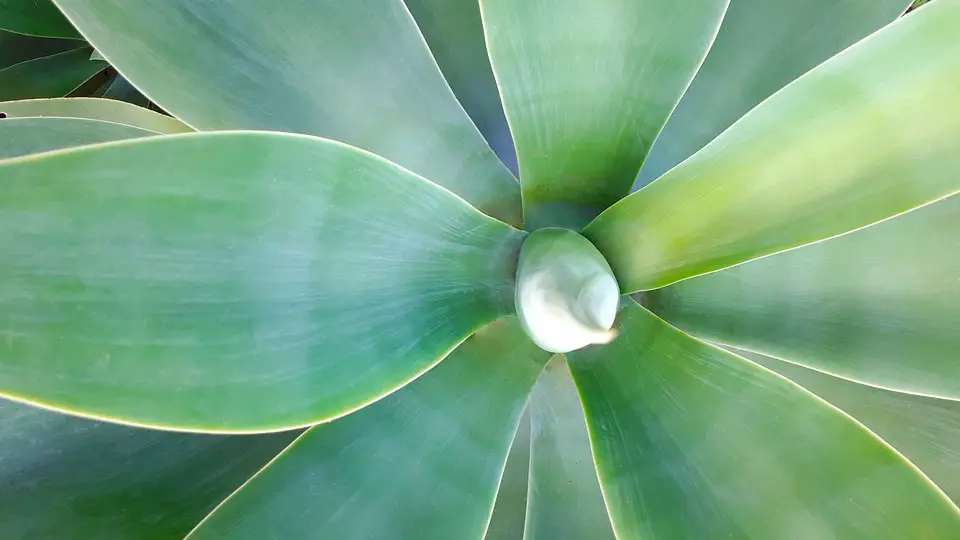Sea holly is a beautiful plant that grows best in sunny, well-drained areas.
Sea holly is a rosette forming perennial that grows best in a sunny dry position and can tolerate coastal winds. If you live in an area where the soil is clay-like or heavy, sea holly may not be the best choice for your garden. It dislikes being waterlogged and is ideal for light, sandy soils that drain well.
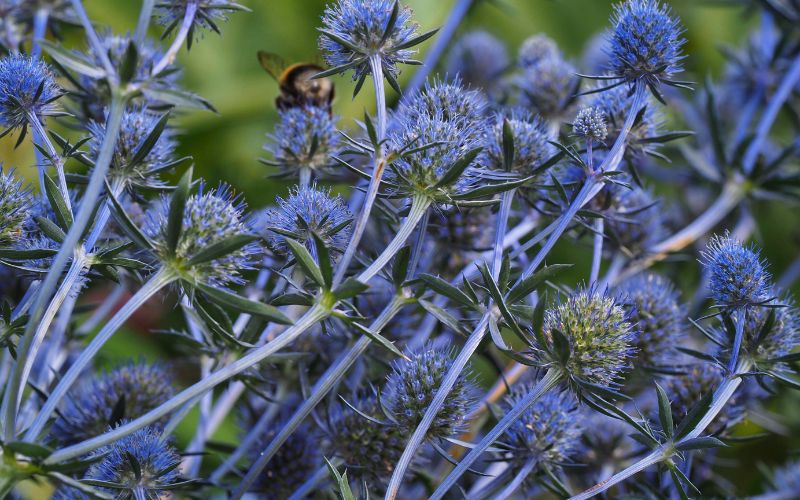
What type of plant is sea holly?
Sea holly is a member of the daisy family. The scientific name for this plant is Eryngium alpinum. It is native to Europe and Asia.
The plant has spiny leaves that have a mid green leaves and produce steely blue flower shoots with thistle like flowers.
Growing sea holly
To propagate from seed, sow in late winter or early spring.
To grow from cuttings, take root cuttings in late winter.
Sea holly is a low-maintenance plant that doesn’t require much fertilizer. However, you can feed it with a balanced fertilizer once a year in the spring.
This plant is drought-tolerant once it’s established. water it weekly during its first growing season. Once it’s established, water it every two weeks unless there’s rain.
Sea holly is not susceptible to many pests or diseases. If aphids become a problem, spray them off with water or treat them with an insecticidal soap.
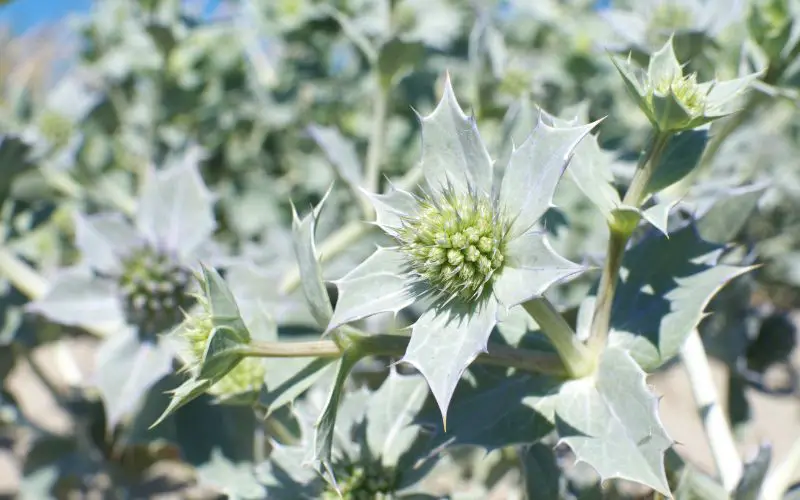
Is sea holly difficult to grow?
Sea holly is not difficult to grow, as long as you have the right conditions.
The plant prefers full sun and well-drained soil. It is also drought tolerant, so it does not need a lot of water.
If you live in an area where the winters are harsh, you may want to consider growing sea holly in a pot so that you can bring it indoors during the winter months.
How do you care for sea holly?
When planting sea holly, be sure to give it enough space. The plant can grow to be quite large, so make sure you have plenty of room in your garden before adding this pretty flower.
Sea hollies are also known to self-seed, so if you don’t want them taking over your garden, you may want to deadhead the flowers regularly.
To do this, simply cut off the flower heads after they have bloomed and discard them.
[amazon box=”B01MRBQ1IJ” template=”horizontal”]
Where can I find sea holly plants?
If you’re looking for sea holly plants, your best bet is to check with local nurseries or plant retailers.
You may also be able to find them online.
What types of sea holly are there?
There are many different types of sea hollies, including:
The Tall White (E. alpinum) – Native to Switzerland’s alpine pastures, the flowers and stems of this species are said to be the bluest in the genus. This one reaches its height of about 2 feet (60 cm.) during July and August.
The E. amethystinum variety of amethyst sea holly, which grows to be about 1-1½ feet (45 cm.) tall and is native to Europe, is one of the most hardy species in its genus. It has lovely amethyst blue flowers and a somewhat scattered growth habit.
Mediterranean Sea Holly (E. bourgatii) – This plant is native to the Pyrenees and has blue-green flowers with silver bracts and white veins within its rough, spiny leaves.
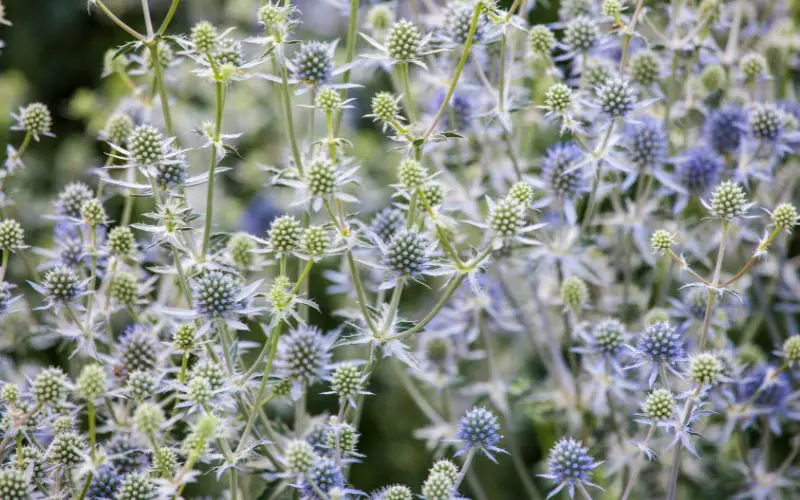
Echinodorus giganteum (also known as Miss Wilmot’s Ghost) is a gigantic sea holly native to the Caucasus. It makes an ideal plant for groupings in the background, growing from 3 to 4 feet (90-120 cm.) or taller and requiring staking.
Acorus, Sea Holly (E. planum) – This Eastern European native grows 2-3 feet tall and has numerous silver-blue flower heads.
Rattlesnake Master (E. yuccifolium) – This species is native to the eastern United States and has button-like flowers and leaves that grow up to 2 to 4 feet tall (60-120 cm.). The myth that these plants could cure rattlesnake bites or drive them away gave its name.
Common Sea Holly (E. maritimum) – This plant grows from 6 inches to 1 1/2 feet (15-45 cm.) tall and is one of the tiniest species in existence.
Can sea holly grow in pots?
Sea holly can be grown in pots, as long as the pot is large enough.
The plant can grow to be quite large, so make sure you have a pot that is at least 12 inches wide and deep.
Does sea holly die back in winter?
Sea holly is a perennial plant, which means that it will come back year after year.
However, the plant does die back in winter. In late fall, the leaves will turn brown and die back.
The plant will remain dormant until spring, when it will begin to grow again.
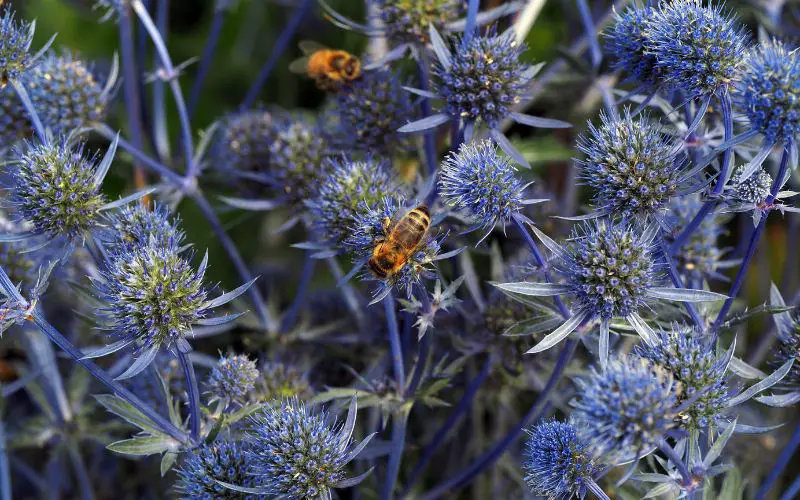
Can you collect sea holly seeds?
Yes, you can collect sea holly seeds. The seeds are located in the flower heads.
To collect them, cut off the flower heads and let them dry in a sunny location.
Once they are dry, you can remove the seeds from the heads and store them in an airtight container.
Can you divide sea holly?
Yes, you can divide sea holly.
The best time to do this is in early spring, before the plant begins to grow.
To divide the plant, dig it up and then use a sharp knife to divide the root ball into smaller pieces.
Replant the divisions in well-draining soil and water them well.
Do sea hollies attract bees?
Yes, sea hollies are known to attract bees and other pollinators.
The flowers are very attractive to bees and other insects, which helps to pollinate the plants.
[amazon box=”B09NQR6F8X” template=”horizontal”]
What animals eat sea holly?
There are a few animals that eat sea holly, including rabbits, deer, and groundhogs.
If you have problems with these animals eating your sea holly, you can try spraying the plant with a diluted solution of water and vinegar.
You can also try putting up a fence around the plant to keep the animals out.
Final Words
Overall, sea holly is a great plant to grow. It is easy to care for and can add interest to your garden.
If you are looking for a plant that attracts bees and other pollinators, this is a great choice.
Sea holly is also deer resistant, which is an added bonus.
So if you are looking for a pretty, easy-to-grow plant, sea holly may be the perfect choice for you.

